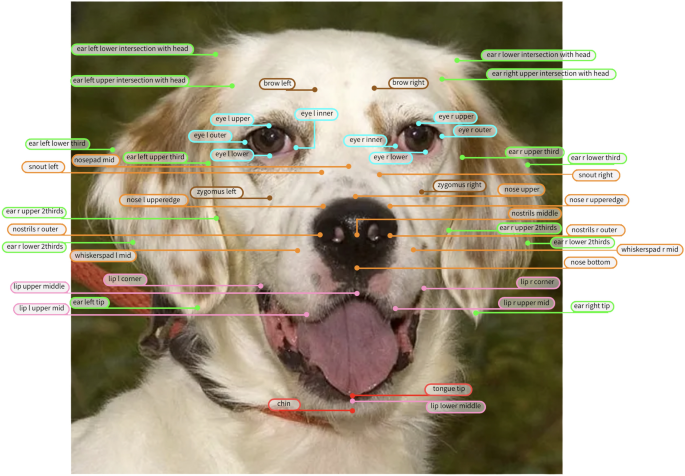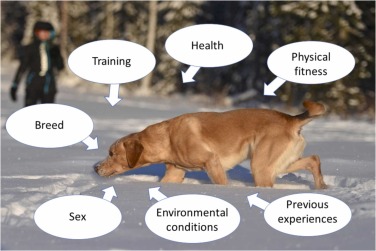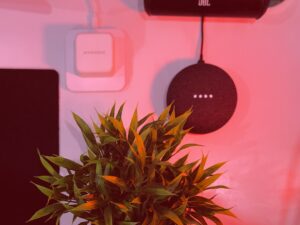The timeless bond between humans and their pets is built on a foundation of love, companionship, and a constant, often one-sided, effort at communication. We interpret a wagging tail as happiness, a purr as contentment, and a whimper as distress. But these are mere glimpses into their complex inner worlds. For generations, we’ve been limited to observing external cues, often missing subtle signs of illness or anxiety until they become critical. Today, we stand at the precipice of a profound transformation in animal care, driven by the convergence of artificial intelligence, advanced sensors, and the Internet of Things (IoT). This new era of AI Pet Tech News is moving far beyond simple GPS tracking and automated feeders. It’s about creating a future where technology acts as an interpreter, a nutritionist, and a proactive guardian, fostering a deeper, data-driven understanding of our beloved animal companions.
The Evolution of Pet Tech: From Digital Leashes to Digital Minds
The journey of pet technology has been one of steady, incremental advancement, but the recent infusion of artificial intelligence represents a quantum leap forward. What began as a way to keep pets from getting lost has evolved into a sophisticated ecosystem aimed at enhancing their overall quality of life.
From Passive Tracking to Active Monitoring
The first wave of pet technology was primarily focused on location and basic activity. GPS collars offered peace of mind for owners of escape-artist dogs, while early activity trackers, akin to a “Fitbit for Fido,” provided rudimentary data on steps taken and calories burned. While useful, these devices were fundamentally reactive. They could tell you where your pet was after they’d gone missing or that they had a lazy day yesterday. They offered a historical record but provided little in the way of predictive or real-time wellness insights. This era was defined by hardware; the software was merely a simple interface to display data points.
The AI Inflection Point: Proactive and Predictive Wellness
The current revolution in Wearables News and pet tech is powered by AI and machine learning. Instead of just collecting data, new devices analyze it. AI algorithms are trained on massive datasets encompassing everything from the acoustic properties of a thousand different barks to the subtle gait changes that precede an orthopedic issue. This allows the technology to shift from a reactive to a proactive stance. The latest AI Monitoring Devices News highlights systems that don’t just track sleep but analyze sleep quality, identifying disruptions that could signal pain or anxiety. They don’t just count steps; they analyze movement patterns to detect lethargy or hyperactivity, often the first signs of an underlying health problem. This is the core of the AI value proposition: identifying anomalies and predicting potential issues before they become visible to the human eye.
Key Technologies Driving the Revolution
This leap forward is not the result of a single invention but the synergy of several key technologies. Sophisticated biometric sensors, once reserved for human AI Fitness Devices News, are now integrated into collars and harnesses, tracking heart rate, respiration, and body temperature. Computer vision, a staple of AI-enabled Cameras & Vision News, allows smart home cameras to do more than just stream video; they can identify and log specific behaviors like eating, drinking, or scratching. On-device processing, a key topic in AI Edge Devices News, enables real-time analysis directly on the collar, reducing latency and improving privacy. Combined with powerful cloud-based AI models, these technologies create a comprehensive, always-on wellness monitoring system for our pets.
Decoding Our Companions: AI in Pet Behavior and Emotion Analysis
Perhaps the most exciting frontier in AI pet tech is the attempt to bridge the communication gap. While we may never have a full-fledged conversation with our cat, AI is providing unprecedented tools to interpret their needs and emotional states through data analysis.

Translating Barks and Meows into Actionable Data
The idea of a “bark translator” has long been a sci-fi trope, but AI is making a functional version a reality. It’s not about direct translation in the human sense, but about classification and intent recognition. AI models, a subject of frequent AI Research / Prototypes News, are trained on vast audio libraries, learning to differentiate the acoustic signatures of a bark associated with playfulness, territorial defense, separation anxiety, or pain. A real-world scenario involves an AI-powered home monitor, a fusion of AI Audio / Speakers News and AI Assistants News. It could learn your dog’s baseline vocalizations and send you an alert at work: “Max has been emitting a high-pitched, repetitive ‘anxiety’ bark for the last 30 minutes,” allowing you to check in via a camera or even activate a smart treat dispenser to soothe them.
The Language of Movement: Computer Vision and Activity Analysis
A pet’s body language is a rich source of information. Modern AI Cameras News integrated into smart home systems can now do more than detect motion; they can identify the pet and analyze its behavior. For example, an AI system could be trained to recognize the difference between a dog stretching after a nap and a dog repeatedly adopting the “prayer position” (front legs down, rear end up), a classic sign of abdominal pain. It could flag excessive scratching, circling, or head shaking, providing owners with a time-stamped video log to show their veterinarian. This transforms a simple security camera into a powerful diagnostic tool, a key trend in AI Security Gadgets News.
Common Pitfalls and Data Privacy Considerations
The path to perfect understanding is not without its challenges. A significant pitfall is the immense variation between breeds and individuals. An AI model trained predominantly on Golden Retrievers might misinterpret the normal behavior of a more stoic breed like a Shiba Inu. Effective systems require robust customization and learning periods to adapt to an individual pet’s unique personality and baseline behaviors. Furthermore, the collection of continuous biometric and behavioral data raises important privacy questions. Consumers must demand transparency from manufacturers about how this sensitive data is stored, secured, and used, ensuring their pet’s data doesn’t become a commodity.
Hyper-Personalization: AI-Driven Health and Nutrition
AI’s analytical prowess is fundamentally changing how we approach pet health, moving from a one-size-fits-all model to one of hyper-personalization. This is particularly evident in the realms of nutrition and early disease detection, a major focus of Health & BioAI Gadgets News.
From Generic Kibble to Genomic Gastronomy
The pet food industry has long relied on broad categories like “puppy,” “adult,” or “senior.” AI is dismantling this simplistic approach. The process often begins with an at-home DNA test, which reveals a pet’s breed mix and genetic predispositions to certain health conditions. An AI algorithm then takes this genomic data and combines it with real-time activity levels, age, weight, and other factors from a smart collar or app. The result is a dynamic, highly customized nutritional plan. For instance, the AI might recommend a diet with specific joint-supporting supplements for a breed prone to hip dysplasia and automatically adjust the calorie recommendations on days when the pet is more or less active. This data can even integrate with AI Kitchen Gadgets News like smart feeders, which can then dispense the precise, AI-recommended portion at the optimal time.
Proactive Diagnostics and Early Intervention

Animals, by instinct, are masters at hiding pain and illness. This is where AI-powered monitoring becomes a lifesaver. A smart collar, a prime example of an AI Sensor & IoT News device, can track subtle shifts in vital signs that are imperceptible to humans. A case study might involve an older cat whose smart collar detects a gradual but persistent increase in water consumption (tracked by sensors on a smart water bowl) and a slight elevation in resting heart rate over two weeks. The AI system, recognizing these as potential early indicators of kidney disease or hyperthyroidism, would send a detailed alert to the owner, urging a veterinary consultation. This early warning can be the difference between managing a chronic condition and facing a medical emergency.
Integrating with the Veterinary Ecosystem
The ultimate goal is to create a seamless flow of information between pet, owner, and veterinarian. Instead of relying solely on a brief, stressful in-office examination, a vet could be granted access to a dashboard showing weeks or months of a pet’s objective data: activity levels, sleep patterns, heart rate variability, and behavioral logs. This provides a holistic view of the animal’s health, enabling more accurate diagnoses and personalized treatment plans. This integration of consumer AI Pet Tech News with professional medical systems represents the future of animal healthcare.
The Interactive Future: Smart Toys, Robotics, and the Connected Pet Home
As AI technology becomes more sophisticated, its role is expanding from passive monitoring to active, intelligent interaction. The connected smart home is evolving to not only accommodate our pets but to enrich their lives, especially when they are home alone.
Beyond Automated Feeders: Intelligent Interaction

The next generation of pet devices is about engagement. We are seeing a rise in AI Toys & Entertainment Gadgets News designed specifically for animals. Imagine a smart ball launcher that uses a camera to detect when a dog brings the ball back, automatically launching it again. An even more advanced version might use AI to learn the dog’s energy levels, initiating a game of fetch when it senses boredom but stopping when it detects signs of fatigue. For cats, laser pointers can trace intelligent, unpredictable patterns that more accurately mimic prey. Furthermore, Robotics News is buzzing with the development of AI Personal Robots designed as pet companions. These robots can navigate the home, engage the pet in play, dispense treats, and even facilitate two-way video calls, helping to alleviate separation anxiety for both pet and owner.
Best Practices for Integrating AI Pet Tech
Adopting this new technology requires a thoughtful approach. Here are some key considerations:
- Start Gradually: Introduce one new device at a time to avoid overwhelming your pet. Allow them to acclimate to a new smart collar or camera before adding a robotic toy to the mix.
- Prioritize Data Security: Choose reputable brands that have clear, transparent privacy policies. Understand who owns your pet’s data and how it is protected.
- Calibrate and Customize: The “out-of-the-box” experience is just the beginning. Take the time to properly set up your pet’s profile, inputting accurate information about their breed, age, weight, and any known health conditions. The more accurate the initial data, the more effective the AI will be.
- Remember the Human Element: It is crucial to remember that technology is a tool to augment, not replace, the human-animal bond. No smart toy can replace a walk in the park, and no biometric data can replace a comforting cuddle.
Looking Ahead: The Next Wave of Innovation
The future holds even more fascinating possibilities. As research in Neural Interfaces News progresses, we may one day see less invasive ways to understand animal brain activity. The latest Drones & AI News could lead to autonomous drones that can safely find and track a lost pet in difficult terrain. The integration of AR/VR AI Gadgets News might allow owners to play with their pets remotely in a more immersive way than a simple video call. The technology being developed across all sectors, from Autonomous Vehicles News to AI for Accessibility Devices News, will undoubtedly find new and creative applications in the world of pet care.
Conclusion: A New Era of Companionship
The landscape of pet care is being fundamentally reshaped by artificial intelligence. We are moving decisively away from an era of reactive problem-solving and into a new paradigm of proactive, personalized, and predictive wellness. AI is giving us a lens through which we can see the invisible—the subtle fluctuations in health and the nuanced expressions of emotion that we previously missed. This technological revolution is not about creating robotic pets or distancing us from our animal companions. On the contrary, it’s about empowering us with a deeper understanding, enabling us to become better caregivers, more attentive friends, and more effective guardians of their health and happiness. The future of pet tech promises not just smarter gadgets, but a richer, healthier, and more deeply connected life for the animals who share our homes.










